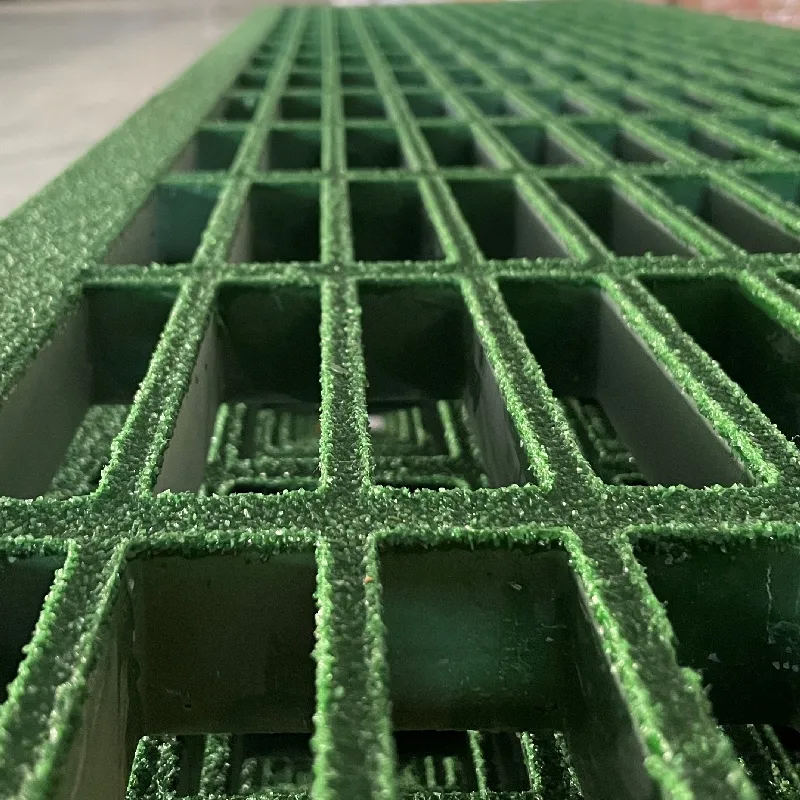loading...
- No. 9, Xingyuan South Street, Dongwaihuan Road, Zaoqiang County, Hengshui, Hebei, China
- admin@zjcomposites.com
- +86 15097380338
- Welcome to visit our website!
Innovative Non-Slip Grating Solutions for Enhanced Safety and Durability in Various Applications
The Role of Non-Slip Grating in Enhancing Safety and Efficiency
In various industrial and commercial environments, safety and efficiency are paramount. One of the often-overlooked aspects that contribute significantly to these factors is the use of non-slip grating. Non-slip grating, designed with the primary purpose of enhancing traction and minimizing the risk of slips and falls, plays a crucial role in maintaining safety across numerous applications, from manufacturing plants to outdoor walkways.
Understanding Non-Slip Grating
Non-slip grating is typically made from materials such as fiberglass, steel, or aluminum. Its structure consists of a series of parallel bars or slats that are spaced to allow for drainage while providing support for pedestrian and vehicular traffic. The surface of this grating is often treated with anti-slip coatings or features raised patterns to increase friction, thereby reducing the likelihood of slips and falls, especially in wet or oily conditions.
Applications of Non-Slip Grating
1. Industrial Settings One of the most common applications of non-slip grating is in industrial environments. Factories, warehouses, and manufacturing facilities often deal with spills from liquids or oils, creating hazardous walking conditions. Installing non-slip grating in these settings not only ensures worker safety but also boosts productivity by allowing employees to move swiftly without the fear of injury.
2. Commercial Buildings Retail stores, restaurants, and public buildings also benefit from non-slip grating systems. For instance, outdoor entrance areas can be particularly slippery during rainy weather. By incorporating non-slip grating into these high-traffic areas, businesses can protect their customers and reduce the likelihood of liability claims stemming from accidents.
3. Transportation Platforms in train stations, bus terminals, and airport walkways frequently employ non-slip grating. Travelers in a hurry or carrying heavy luggage can easily lose their footing on slick surfaces. Installing non-slip grating not only improves safety but also facilitates smoother movement of foot traffic, contributing to an overall positive experience for passengers.
non slip grating

4. Marine Applications Boats and ships often face challenging conditions due to water splashes and wave movements. Non-slip grating is essential in these environments to ensure crew members can safely navigate decks and other surfaces while performing their duties. Its resilience against corrosion makes non-slip grating an ideal choice for marine applications.
5. Outdoor Areas Parks, pool decks, and other outdoor recreational areas are often vulnerable to slips. Installing non-slip grating on pathways and decking can provide a safer environment for families and individuals enjoying recreational activities. The added safety feature promotes greater use of these areas, fostering a more active lifestyle.
Standards and Regulations
To ensure the effectiveness of non-slip flooring solutions, various standards and regulations have been established. Organizations such as the Occupational Safety and Health Administration (OSHA) and the American National Standards Institute (ANSI) provide guidelines that define acceptable levels of slip resistance. Compliance with these standards is crucial, as it not only enhances safety but also signifies a commitment to maintaining a secure environment for employees and customers alike.
Future Innovations
As industries evolve, so too does the technology behind non-slip grating. Innovations in materials science are leading to the development of even more advanced non-slip solutions. For example, the integration of smart materials that react to environmental conditions can dramatically improve traction when conditions are less than ideal. Additionally, environmentally friendly materials are becoming more prevalent, aligning with sustainability goals in modern construction and manufacturing.
Conclusion
Non-slip grating is an essential component for enhancing safety in a variety of environments. Its applications span across industrial, commercial, and recreational domains, proving its versatility and importance. As we place increased emphasis on occupational safety and public welfare, the role of non-slip grating becomes even more critical. With ongoing innovations and adherence to safety standards, we can expect this humble yet vital feature to continue making significant impacts in preventing accidents and promoting efficient movement in both work and play.
-
The Rise of FRP Profiles: Strong, Lightweight, and Built to LastNewsJul.14,2025
-
SMC Panel Tanks: A Modern Water Storage Solution for All EnvironmentsNewsJul.14,2025
-
GRP Grating: A Modern Solution for Safe and Durable Access SystemsNewsJul.14,2025
-
Galvanized Steel Water Tanks: Durable, Reliable, and Ready for UseNewsJul.14,2025
-
FRP Mini Mesh Grating: The Safer, Smarter Flooring SolutionNewsJul.14,2025
-
Exploring FRP Vessels: Durable Solutions for Modern Fluid HandlingNewsJul.14,2025
-
GRP Structures: The Future of Lightweight, High-Performance EngineeringNewsJun.20,2025
